
What are the different notes and coins of the English currency?
The pound sterling - often abbreviated pound - is the official monetary unit of the United Kingdom, British Crown Dependencies and British Overseas Territories.
There are 4 banknotes and 8 coins in the English currency:
- Banknotes: £5, £10, £20 and £50 - "£" is the symbol for the pound sterling.
- Coins: £1, £2, 50p, 20p, 10p, 5p and 1p - "p" is the symbol for penny (or pence in the plural).
advertisement
The term "pound sterling" is often abbreviated as "pound".
Unlike the "€" symbol for the euro, the "£" symbol is placed before the amount.
Created over 12 centuries ago, the pound sterling is one of the oldest currencies in the world still in circulation.
Banknotes
In 2016, in order to fight against fraud and counterfeiting, the Bank of England announced the arrival of new banknotes of £5, £10 and £20 in polymer : a plastic that is more difficult to counterfeit than paper.
The old £5 and £10 banknotes have been permanently withdrawn from circulation and are therefore no longer accepted - however you can still exchange them at the Bank of England.
The fronts of the banknotes all show the portrait of the Queen Elizabeth II - only the backs are specific to each ticket.
The 5 pounds banknote
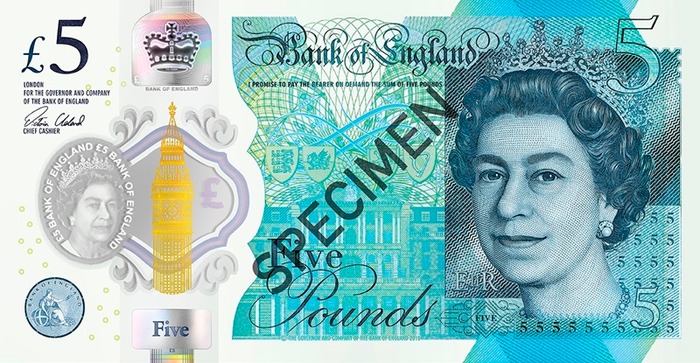
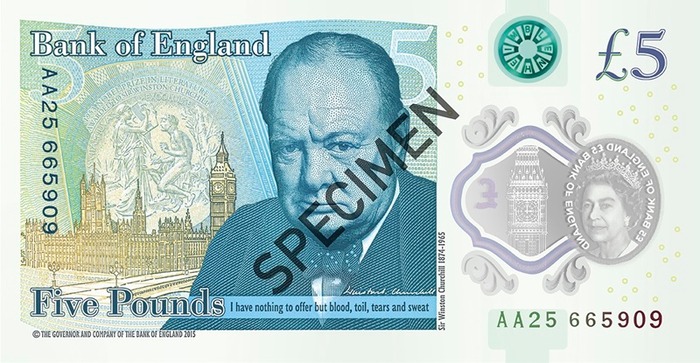
The new £5 banknote ("New Fiver”) entered circulation on September 13, 2016 - the first in the new series of banknotes in polymer to have been unveiled.
It shows the portrait of the queen Elizabeth II on her front, and the portrait of Winston Churchill on its back.
The old £5 note - in paper - was permanently withdrawn from circulation on May 5, 2017.
The 10 pounds banknote
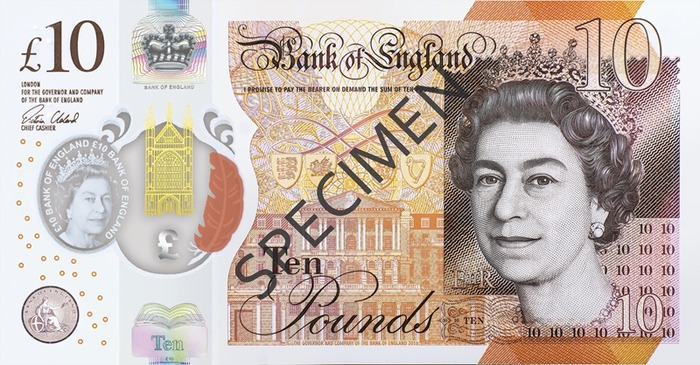
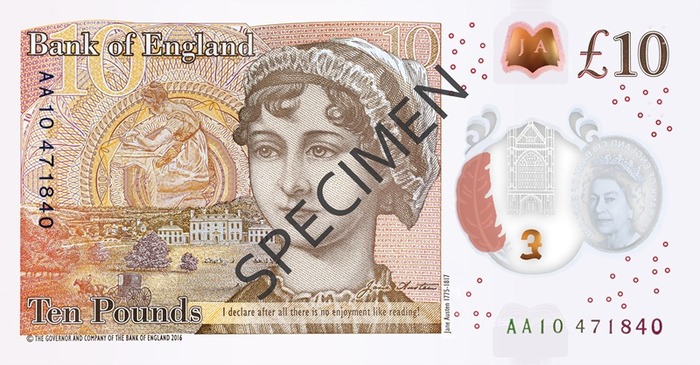
The new £10 banknote ("New Ten Pounds Note") entered circulation on September 14, 2017 - it is the second banknote in the new series in polymer to have been unveiled.
The old £10 note - in paper - was permanently withdrawn from circulation on March 1, 2018.
It shows the portrait of the queen Elizabeth II on her front, and the portrait of Jane Austen on its back.
The 20 pounds banknote
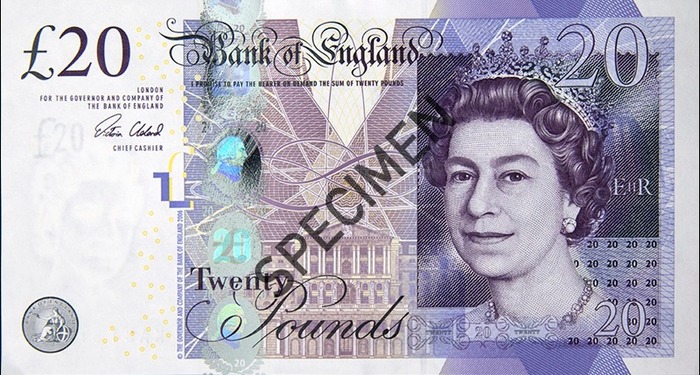
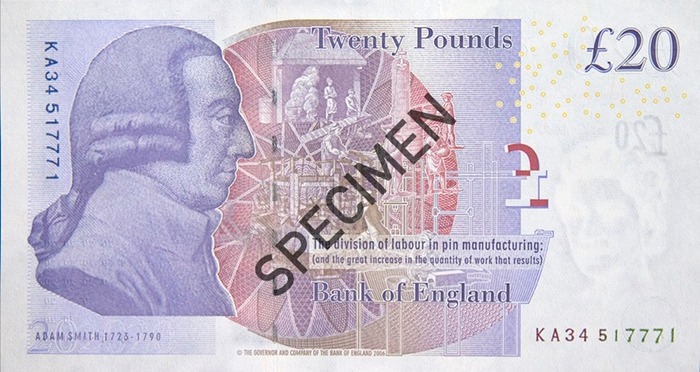
The new £20 banknote entered circulation on February 20, 2020.
It shows the portrait of the Queen Elizabeth II on its front, and the portrait of the artist Joseph Mallord William Turner (JMW Turner) on its back.
The 50 pounds banknote
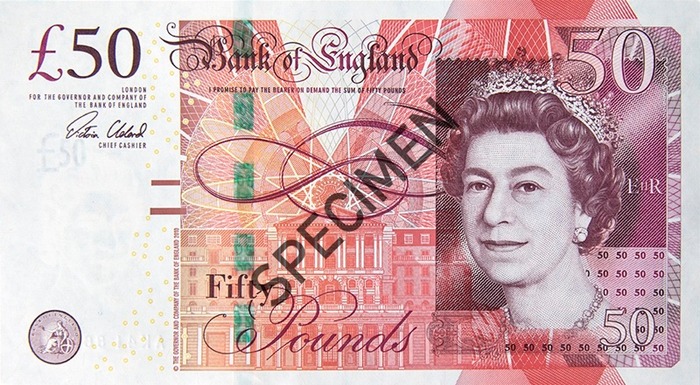
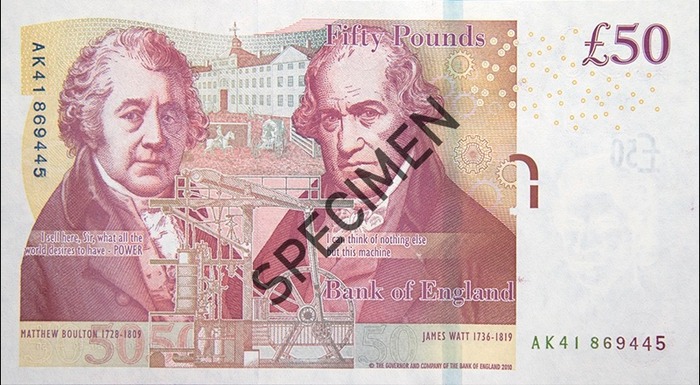
The £50 banknote currently in circulation features the portrait of the Queen Elizabeth II on its front, and the portraits of Matthew Boulton and James Watt on its back.
The replacement of the £50 paper note with a new polymer note is scheduled for the end of 2021.
Coins
In 2015, still in the interests of combating fraud and counterfeiting, The Royal Mint announced the entry into circulation of a new coin of £1: bimetallic with 12 edges, it represents the English rose, the Welsh leek, the Scottish thistle and the Northern Irish clover, all surrounded by the royal crown.
The old £1 coins were permanently withdrawn from circulation on 15 October 2017 and are therefore no longer accepted - however you can still exchange them at The Royal Mint.
The pound
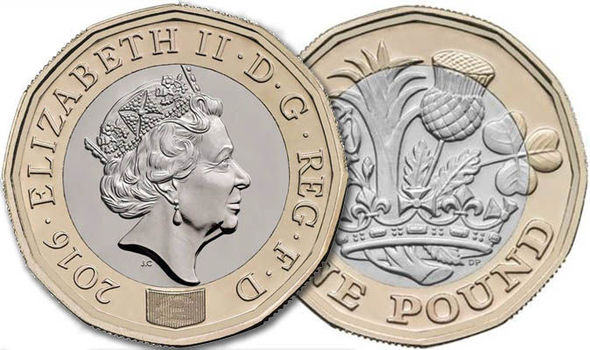
The new £1 coin ("New One Pound Coin”) entered into circulation on March 28, 2017.
The old £1 coin was permanently withdrawn from circulation on October 15, 2017.
There are parts from:
- 1 pound (£1)
- 2 pounds (£2)
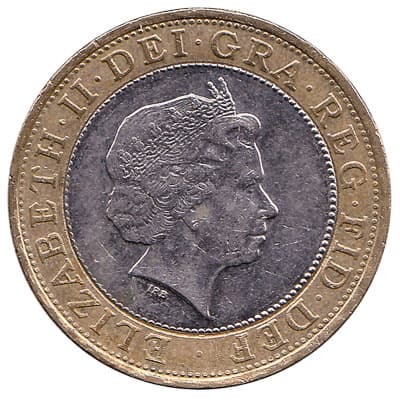
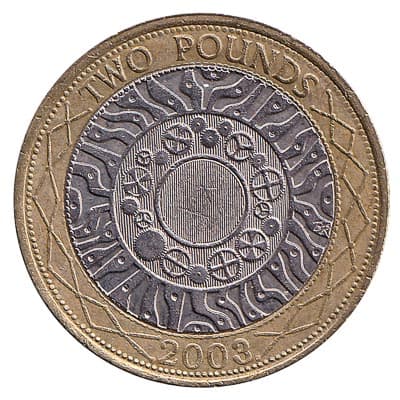
Photo credit: Leftover Currency
The penny and the pence
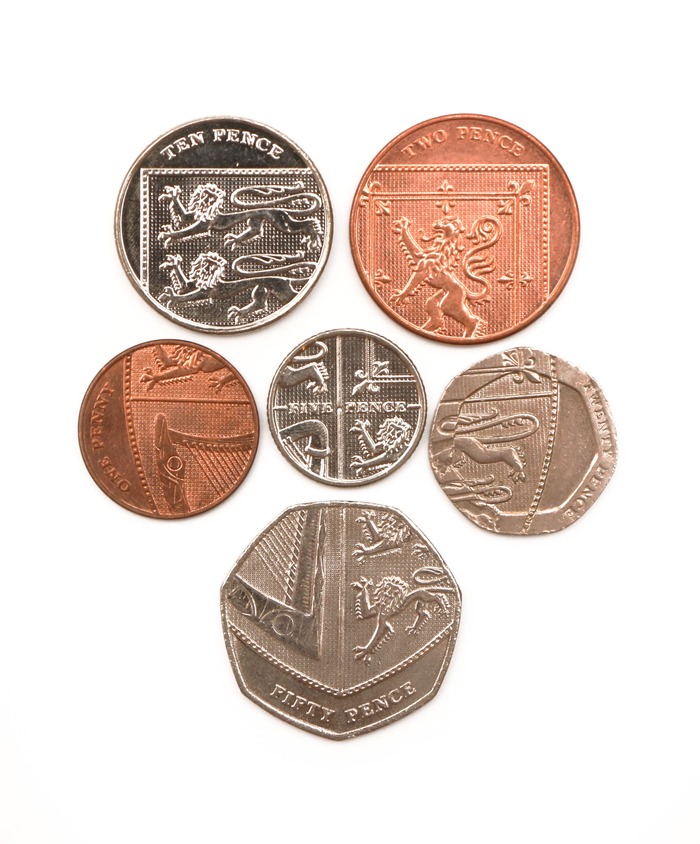
In the English currency unit, "pence" is simply the plural of the word "penny".
We use the word "pennies" when talking about several coins.
There are parts from:
- 1 penny (1p)
- 2 pence (2p)
- 5 pence (5p)
- 10 pence (10p)
- 20 pence (20p)
- 50 pence (50p)
They are the equivalent of euro cent coins (€).
It takes 100 pence to make 1 pound.